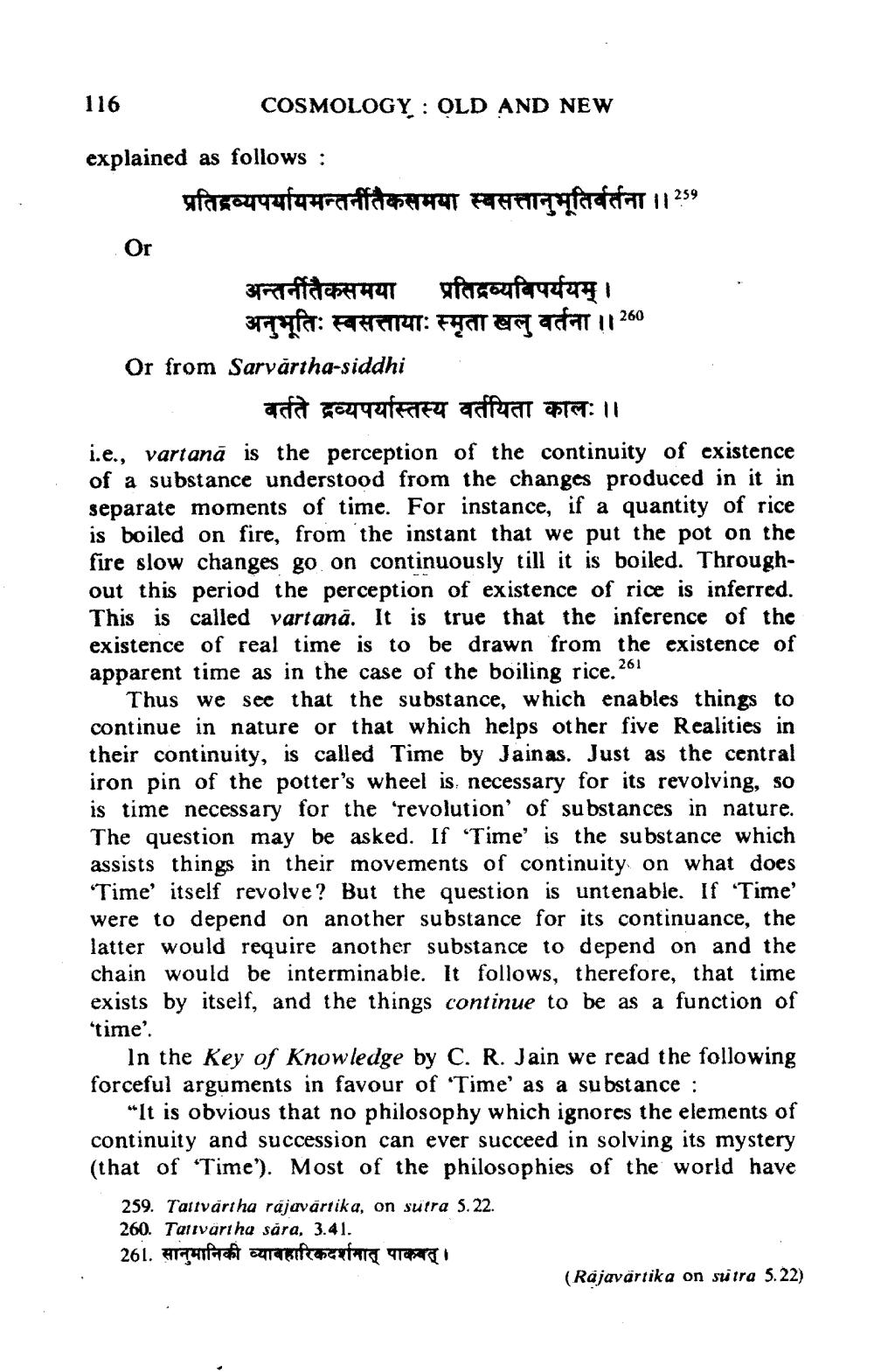________________
116
COSMOLOGY : OLD AND NEW explained as follows :
fago444f4trafferet frienc at 11 259 Or
अन्तर्हतैकसमया प्रतिद्रव्यविपर्ययम्।
aft: FTTETTAT: FECIT est adat 11 260 Or from Sarvartha-siddhi
वर्तते द्रव्यपर्यास्तस्य वर्तयिता कालः ।। i.e., vartanā is the perception of the continuity of existence of a substance understood from the changes produced in it in separate moments of time. For instance, if a quantity of rice is boiled on fire, from the instant that we put the pot on the fire slow changes go on continuously till it is boiled. Throughout this period the perception of existence of rice is inferred. This is called vartană. It is true that the inference of the existence of real time is to be drawn from the existence of apparent time as in the case of the boiling rice. 261
Thus we see that the substance, which enables things to continue in nature or that which helps other five Realities in their continuity, is called Time by Jainas. Just as the central iron pin of the potter's wheel is necessary for its revolving, so is time necessary for the revolution of substances in nature. The question may be asked. If 'Time' is the substance which assists things in their movements of continuity on what does 'Time' itself revolve? But the question is untenable. If 'Time' were to depend on another substance for its continuance, the latter would require another substance to depend on and the chain would be interminable. It follows, therefore, that time exists by itself, and the things continue to be as a function of "time'.
In the Key of Knowledge by C. R. Jain we read the following forceful arguments in favour of 'Time' as a substance :
"It is obvious that no philosophy which ignores the elements of continuity and succession can ever succeed in solving its mystery (that of 'Time'). Most of the philosophies of the world have
259. Tattvärtha räjavārtika, on sutra 5.22. 260. Tativarıha sára, 3.41. 261. arguar cara ao entare questa
(Rajavärtika on su tra 5.22)




